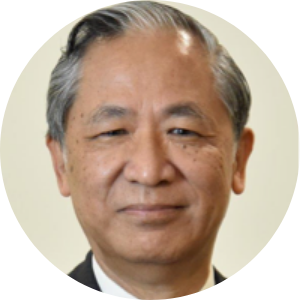by Dr. Peter Mack
School counsellors and teachers are frequently called upon to help students who face difficulty in coping with their emotions and with schoolwork. Some students have underlying problems such as ADHD and mild autism, or are distracted by traumatic experiences such as family break-ups. Others may face difficulty coping with their learning workload and meeting parent expectations.
Such students need to regain their emotional stability and strength before re-joining their regular lessons to continue with the curriculum and catch up with the rest of the class. Under these circumstances, mindfulness is recognized as an appropriate and powerful tool, and is being increasingly used in combination with expressive art to enhance its healing potential.
When I received a request to write the book The Misted Mirror, it struck me that our societal and educational changes have gathered significant momentum in recent years. For some time, I have been reflecting on an appropriate way to deliver my message on mindfulness to educators and learners. I personally see mindfulness practice as analogous to going to a mental gym where we can build up the muscles of the mind. Mental gymnastics in turn will strengthen us both emotionally and socially.
Many mindfulness books have been written in recent years. Most of them are scripted from the perspective of stress and anxiety reduction, anger management, mental health and spiritual growth. In line with this, many people have perceived mindfulness as being reserved for the mentally vulnerable or spiritually profound. Far fewer people are aware of how it can benefit school children and teachers in terms of enhancing the learning process.
A colleague of mine was once perplexed as to why mindfulness would benefit not just learners but also teachers. I personally take the view that mindfulness is a wholesome act. While helping adolescents to learn and develop into wholesome adults in a rapidly changing world, it also helps our educationists to shape the curriculum and school environment towards a path of holistic education.
Mindfulness refers to a person’s tendency to remain attentive to his own experience, thoughts and feelings in a non-judgmental manner. It is a wonderful technique that all of us can use to master and restore the tranquillity in ourselves. This is because it helps us to attain a state where we feel totally unattached to anything in the world and without inclination to cling on to anything. When we attain this mental state, we find it easier to see things and situations below the superficial level of opinions. This is a time-honoured approach and has been well accepted as a means to improve wellness and provide us with a sense of fulfilment. However, there is also a growing body of evidence showing that mindfulness also has substantial benefits for teachers and students in the school environment.
There are four main areas in which mindfulness is relevant to the student.
First and foremost, it helps to manage stress. Failing to answer a question when called in front of an entire class is usually stressful. So is forgetting homework or not meeting parents’ expectations in exam scores. In calming the mind with the help of mindfulness, the student can reduce the negative effects of stress and help themselves to stay on track academically. Calmness helps to reduce the student’s emotional reactivity so that there are fewer obstacles getting in the way of learning.
Secondly, mindfulness helps to improve attentiveness, which is of paramount importance in the classroom environment. Enhanced attention means that the student will be able to take in more information without being distracted by their own reaction or preconceived ideas.
Thirdly, mindfulness improves working memory and cognitive reasoning, especially in studies. Regular meditation practice is known to increase blood flow to the brain, leading to a stronger network of blood vessels being built in the brain cortex, reinforcing memory capacity and cognitive functioning. This would in turn impact positively on the goal-directed behaviour of the student in the acquisition of new knowledge.
The fourth benefit, and one that is often overlooked, is the cultivation of an innovative and creative mind. Each of us, as a learner, has an enormous amount of curiosity and imagination which, when activated, can unleash our creativity within and transform our ability in problem-solving.
Mindfulness is currently being taught as a practice of developing an orientation to the present moment. There is ample evidence to conclude that its cultivation facilitates adaptive psychological functioning, which in turn increases our wellbeing.
In The Misted Mirror, the reader will learn to perceive the mind as a tool that can be used to cultivate inner calm, attentiveness and clarity of mental focus. You will be able to use it to improve studies, but you can also use it for nurturing resilience in your journey of growth and maturity. In particular, you will see the relevance of mindfulness in stressful situations commonly faced by many of us in our current, fast-paced education system.
Find out more

Dr. Peter Mack is a medical practitioner who specializes in general surgery and has been practicing in a public hospital for more than four decades. In his continuous pursuit of improved patient care, Dr. Mack has involved himself in the field of regression hypnotherapy and mindfulness. He uses therapeutic art expression for patient support groups and has delivered talks on mindfulness to school counsellors, human resource staff and the Buddhist Fellowship community in Singapore. Dr. Mack has authored four books on healing (Healing Deep Hurt Within, Life-Changing Moments in Inner Healing, Inner Healing Journey, Mirrors of the Mind) and two books on teenage anxiety and depression (Bend Not Break, You Are Not Alone).

Bookshelf
The Misted Mirror: Mindfulness for Schools and Universities by Dr. Peter Mack, published by From The Heart Press, paperback, £8.99

 Cart is empty
Cart is empty 
